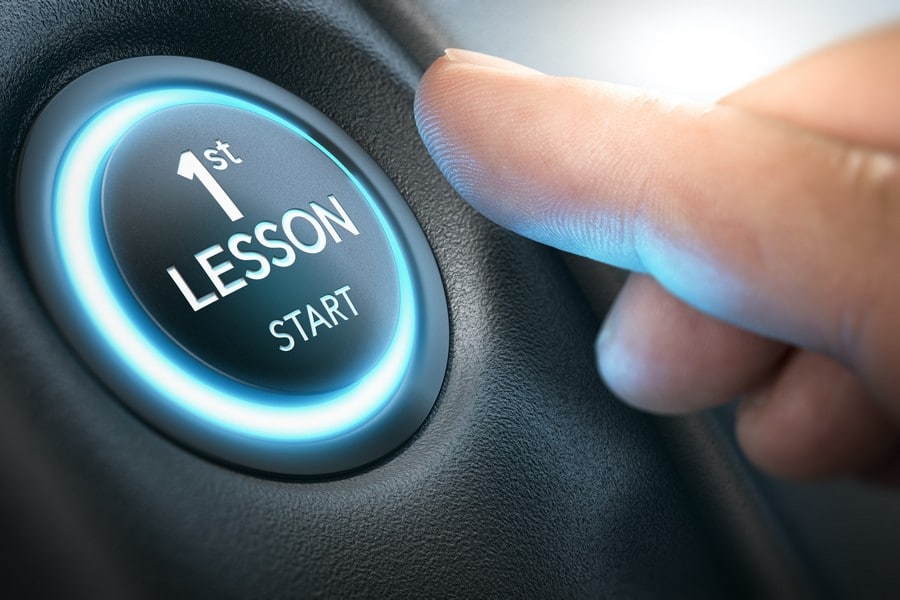
What is the Biting Point?
The biting point is the point at which the clutch engages when the driver depresses the clutch pedal. It is the point at which the engine and the transmission are connected and the car is ready to move. When driving a manual car, the biting point is crucial for smooth gear changes and overall control of the vehicle.
Understanding the concept of the biting point is important for any driver of a manual car. It allows the driver to smoothly and safely engage the clutch and move the car. Without understanding the biting point, it can be difficult to find the right balance between the engine and the wheels, resulting in jerky movements and potential damage to the clutch.
The purpose of the biting point is to provide a ready-point for the driver. It allows the driver to smoothly engage the clutch and get the car moving. By finding the biting point, the driver can gradually release the clutch pedal while applying the appropriate amount of throttle to smoothly transition from a stationary position to moving forward.
To find the biting point, the driver must depress the clutch pedal fully and then slowly release it until they feel a slight resistance or hear the engine note change. This is the point at which the clutch is engaged enough to transmit power from the engine to the wheels, but not enough to fully disengage the clutch. At this point, the driver can begin to apply throttle and release the clutch pedal further to smoothly move the car.
The biting point works by the interaction between the clutch and accelerator pedals. When the clutch pedal is fully depressed, the clutch is disengaged, and there is no power being transmitted from the engine to the wheels. As the driver releases the clutch pedal, the clutch gradually engages, allowing power to be transmitted to the wheels. At the same time, the driver can apply throttle using the accelerator pedal to increase the engine speed and match it with the speed of the wheels. This synchronisation between the engine and the wheels is what allows the car to smoothly move forward.
In summary, the biting point is the point at which the clutch engages and the car is ready to move. It is crucial for smooth gear changes and overall control of the vehicle. Understanding the concept of the biting point is important for any driver of a manual car, as it allows for smooth and safe clutch engagement. By finding and using the biting point correctly, the driver can smoothly transition from a stationary position to moving forward. The biting point is found by gradually releasing the clutch pedal while applying the appropriate amount of throttle, allowing the clutch to engage and transmit power from the engine to the wheels.
How to Find the Biting Point
Steps to Finding the Biting Point:
- Start the engine and depress the clutch pedal fully.
- Select first gear.
- Slowly release the clutch pedal while gently pressing the accelerator.
- Listen for the engine to start to engage and feel for the clutch to start to bite.
Explanation of the Step-by-Step Process to Locate the Biting Point:
- Start the engine and depress the clutch pedal fully. This will ensure that the clutch is disengaged and the car will not move. It is important to start the engine before attempting to find the biting point.
- Select first gear. This will ensure that the car is ready to move when the clutch is engaged. It is important to have the car in gear before releasing the clutch pedal.
- Slowly release the clutch pedal while gently pressing the accelerator. This will allow the clutch to slowly engage and the car to start to move. It is important to release the clutch pedal gradually and smoothly to avoid stalling the car.
- Listen for the engine to start to engage and feel for the clutch to start to bite. As the clutch is released, the engine note will change and the car will start to move. This is the biting point, where the clutch is fully engaged and the car begins to move.
Importance of practising and Becoming Familiar with the Process:
Practising and becoming familiar with the process of finding the biting point is crucial for learner drivers. It allows for smooth gear changes and safe driving. By mastering this skill, learners can avoid stalling the car and jerky movements when starting from a stop. practising in a safe and controlled environment, such as an empty parking lot, can help learners gain confidence and improve their clutch control.
Common Mistakes to Avoid When Finding the Biting Point:
- Releasing the clutch too quickly: Releasing the clutch pedal too quickly can cause the car to stall. It is important to release the clutch gradually and smoothly.
- Not applying enough pressure to the accelerator: Applying a small amount of pressure to the accelerator while releasing the clutch helps to find the biting point. Not applying enough pressure can result in the car stalling.
- Not listening to the engine: The engine note changes when the clutch starts to engage. It is important to listen for this change and use it as a cue to find the biting point.
Identification of Common Errors Made by Learner Drivers When Trying to Find the Biting Point:
Learner drivers often struggle with finding the biting point due to lack of experience and coordination. Common errors include releasing the clutch too quickly, not applying enough pressure to the accelerator, and not listening to the engine. These errors can result in stalling the car or jerky movements when starting from a stop.
Tips on How to Avoid These Mistakes and Improve Clutch Control:
- Practice in a safe and controlled environment: Practising in an empty carpark or on quiet roads can help learners gain confidence and improve their clutch control.
- Start with slow and gradual movements: When starting from a stop, it is important to release the clutch pedal slowly and smoothly. Starting with slow movements can help learners develop a better feel for the biting point.
- Listen to the engine: Paying attention to the engine note can help learners identify the biting point. The engine note changes when the clutch starts to engage, indicating that the car is ready to move.
Signs that the Biting Point has been Found:
The signs that the biting point has been found include a change in the engine note and the car starting to move. As the clutch is released and the biting point is reached, the engine note will change from a low idle sound to a higher pitch. The car will also start to move forward or backward, depending on the gear selected.
Importance of recognising these Signs for Smooth Gear Changes:
Recognising these signs is important for smooth gear changes. By finding the biting point, learners can smoothly transition from a stop to moving without stalling the car or experiencing jerky movements. This allows for a more comfortable and controlled driving experience.
How to Use the Biting Point
Techniques for Using the Biting Point
The biting point is a crucial concept to understand and master for safe and confident driving. It refers to the point at which the clutch engages and the car begins to move. By effectively using the biting point, drivers can make smooth gear changes and maintain control of the vehicle.
Explanation of How to Effectively Use the Biting Point for Smooth Gear Changes
To effectively use the biting point, it is important to practice and develop a good sense of clutch control. When starting the car, the driver should press the clutch pedal all the way down and then slowly release it until they feel a slight vibration or “biting” sensation. This is the biting point, indicating that the clutch is engaged and the car is ready to move.
When changing gears, the driver should press the clutch pedal all the way down and select the desired gear. Then, they should slowly release the clutch pedal until they feel the biting point again. At this point, the driver should gradually increase the pressure on the accelerator pedal to smoothly transition into the new gear.
Tips on Maintaining Control and Preventing Stalling
Maintaining control of the car and preventing stalling are essential when using the biting point. To achieve this, drivers should ensure they press the clutch pedal all the way down and release it slowly and steadily. This allows for a smooth engagement of the clutch and prevents sudden jerks or stalls.
It is also important to find the right balance between the clutch and accelerator. By applying a certain amount of pressure to each, the car will be on the brink of moving while remaining stationary. It is crucial not to over-rev the engine, but to apply enough accelerator pressure to prevent stalling when raising the clutch.
Benefits of Using the Biting Point
Using the biting point correctly offers several benefits for drivers. Firstly, it allows for smooth gear changes, ensuring a seamless transition between gears and reducing wear and tear on the clutch. Secondly, it provides better control over the vehicle, especially at low speeds or in stop-start traffic situations. Lastly, it helps prevent stalling, which can be embarrassing and potentially dangerous in certain driving conditions.
Advantages of utilising the Biting Point for Improved Driving Experience
Utilising the biting point effectively can greatly enhance the overall driving experience. By mastering this skill, drivers can enjoy smoother gear changes, which contribute to a more comfortable and enjoyable ride. Additionally, it allows for better control over the vehicle, leading to increased confidence and a sense of being in command of the car.
Importance of Mastering the Skill for Confident and Safe Driving
Mastering the skill of using the biting point is crucial for confident and safe driving. It enables drivers to smoothly engage the clutch and get the car moving without stalling or causing sudden jerks. This skill is particularly important when driving in challenging situations, such as on steep inclines or in heavy traffic. By understanding and practising correct clutch control, drivers can navigate these situations with ease and reduce the risk of accidents.
Risks of Not Using the Biting Point
Not properly using the biting point can lead to various risks and consequences. Firstly, incorrect clutch control can result in stalling the engine, which can be dangerous, especially in busy traffic or at intersections. Stalling can also cause inconvenience and frustration for the driver and other road users. Secondly, not using the biting point effectively can lead to jerky gear changes, which can be uncomfortable for passengers and potentially damage the clutch over time. Lastly, inadequate clutch control can result in a loss of control over the vehicle, leading to accidents or near-miss situations.
Discussion of the Potential Consequences of Not Properly Using the Biting Point
The consequences of not properly using the biting point can range from minor inconveniences to more serious safety risks. Stalling the engine can cause delays and frustration for the driver and other road users. It can also create hazardous situations, especially if it occurs in the middle of an intersection or on a busy road. Jerky gear changes can lead to discomfort for passengers and potential damage to the clutch system. Additionally, a lack of control over the vehicle due to improper clutch control can result in accidents or near-miss situations, endangering the driver, passengers, and other road users.
Importance of Understanding the Risks and practising Correct Clutch Control
Understanding the risks associated with not properly using the biting point and practising correct clutch control are essential for safe and confident driving. By being aware of the potential consequences, drivers can take the necessary steps to develop their clutch control skills and ensure smooth gear changes. Regular practice and experience are key to mastering this skill and minimising the risks associated with improper clutch control.
What the Highway Code Says About the Biting Point
Rules and Regulations Regarding the Biting Point
The Highway Code does not specifically mention the biting point, but it does provide guidance on the use of the clutch when driving a manual vehicle. The clutch is a crucial component in controlling the speed and movement of the vehicle. It is used to engage and disengage the engine from the wheels, allowing for smooth gear changes and preventing the engine from stalling.
Explanation of the Specific Guidelines Outlined in the Highway Code
According to the Highway Code, the clutch should be used to control the speed of the vehicle, change gears, and start and stop the vehicle. When starting a manual vehicle, the driver should press the clutch pedal down and engage the biting point. The biting point is the point at which the clutch plates make contact and the car begins to move. The driver should then slowly release the clutch pedal until the engine starts to move the wheels. This should be done before revving the engine, as revving too much can cause the car to stall.
When changing gears, the driver should use the clutch to disengage the engine from the wheels, shift to the desired gear, and then engage the clutch again to re-engage the engine with the wheels. This should be done smoothly and without grinding the gears.
When stopping the vehicle, the driver should use the clutch to disengage the engine from the wheels, apply the brakes, and then engage the clutch again when starting to move.
Importance of Adhering to These Rules for Safe Driving
Adhering to these rules is crucial for safe driving. Using the clutch correctly ensures smooth gear changes, prevents the engine from stalling, and allows for better control of the vehicle. Failing to use the clutch properly can result in jerky movements, grinding of gears, and even accidents. It is important to practice and develop good clutch control skills to ensure safe and efficient driving.
Exceptions to the Rules Regarding the Biting Point
The Highway Code does not provide any specific exceptions to the rules regarding the biting point. However, it is important to note that different vehicles may have different clutch systems and characteristics. It is essential for drivers to familiarise themselves with the specific clutch system of the vehicle they are driving and adjust their clutch control accordingly. Additionally, driving conditions and situations may require different clutch control techniques, such as when driving on steep inclines or in heavy traffic. Drivers should adapt their clutch control to these special circumstances to ensure safe and efficient driving.
What Our Experts at Smart Drive UK Say About the Biting Point
Smart Drive UK’s approach to the biting point is based on a combination of sensory feedback, practice, and patience. They focus on helping learners develop their muscle memory and become more aware of the car’s movements and the engine’s sound. They also provide tips and tricks to help learners find the biting point more quickly and easily.
Overview of Smart Drive UK’s teaching methods and techniques for mastering the biting point:
- Smart Drive UK takes a comprehensive approach to teaching the biting point. Their instructors are experienced and knowledgeable in the techniques and strategies needed to master this skill.
- They use a variety of teaching methods and techniques, hands-on practice, and feedback.
- They provide learners with an overview of the concept and the importance of mastering the biting point.
- They provide a step-by-step guide to mastering the biting point, including tips and tricks for improving clutch control and finding the biting point consistently.
- They offer a range of practice exercises and scenarios to help learners develop their skills.
Importance of professional instruction and guidance:
- Smart Drive UK emphasises the importance of professional instruction and guidance when learning the biting point.
- Their instructors are experienced and knowledgeable in the techniques and strategies needed to master this skill.
- They provide the support and guidance needed to help learners become more confident and competent drivers.
Expert advice and strategies for improving clutch control and finding the biting point consistently:
- Smart Drive UK’s instructors provide expert advice and strategies for improving clutch control and finding the biting point consistently.
- They focus on helping learners develop their muscle memory and become more aware of the car’s movements and the engine’s sound.
Overall, developing good clutch control skills is important for finding the biting point consistently, making smooth gear changes, and having an overall better driving experience. By practising regularly and using techniques such as using the handbrake on inclines, drivers can improve their clutch control and enjoy a more comfortable and controlled driving experience.
Final Thoughts on the Biting Point
Final Thoughts on the Biting Point
Understanding and mastering the biting point is crucial for safe and confident driving, especially for those learning to drive a manual transmission vehicle. The biting point is the point at which the clutch engages and the car begins to move. It is found by slowly releasing the clutch pedal until the car starts to move.
To find the biting point consistently, it is important to have a good understanding of the relationship between the clutch pedal and the accelerator. When the clutch pedal is released, the engine speed increases and the car starts to move. It is important to find the balance between the clutch and accelerator, applying enough pressure to the accelerator to prevent stalling while not over-revving the engine.
Mastering the biting point requires practice and patience. It is recommended to seek professional instruction to improve clutch control and learn how to find the biting point consistently. Professional instruction can help identify any bad habits and provide guidance on how to improve clutch control. Regular practice is also essential to become familiar with the car and develop the skills needed to find the biting point consistently.
In summary, the biting point is the point at which the clutch engages and the car begins to move. It is important to find the biting point consistently to avoid stalling the car and ensure smooth gear changes. Understanding and mastering the biting point is crucial for safe and confident driving. Seek professional instruction and practice regularly to improve clutch control and find the biting point consistently.
##
Contact Us at Smart Drive UK
If you are a UK learner driver looking for professional driving lessons and guidance on mastering the biting point, Smart Drive UK is the perfect place for you. Our experienced instructors are dedicated to helping you become a safe and confident driver.
Why Choose Smart Drive UK?
At Smart Drive UK, we understand that learning to drive can be a daunting experience. That’s why we strive to make the process as stress-free and enjoyable as possible. Our instructors are friendly and patient, providing you with the support and encouragement you need to succeed.
Our Services
We offer a range of services to meet the needs of all learner drivers. Whether you are a complete beginner or just need a few refresher lessons, we can help. We also provide intensive courses for those who want to pass their test quickly.
How to Get in Touch
If you would like to find out more about our services or have any questions, please don’t hesitate to get in touch with us. You can call us on 01903 691002 or email us at admin@smartdriveuk.co.uk. Alternatively, you can visit our website at www.smartdriveuk.co.uk for more information.
We look forward to hearing from you and helping you become a safe and confident driver.



